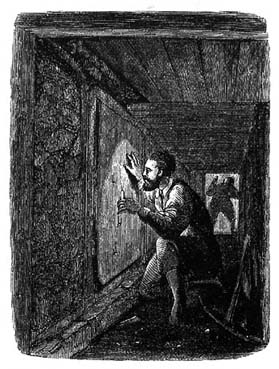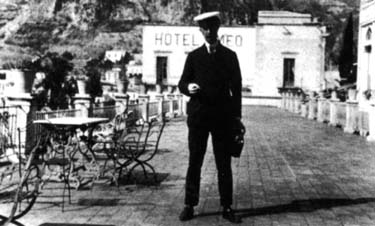King
Solomon's Treasure

Walter Juvelius
In
1908
Walter Juvelius, a Finnish poet who was fond of spiritualism and biblical
archaeology, believed he had found a coded scritural passage indicating
the place where King Solomon's treasure was kept. According to the passage,
which he found in an ancient version of the Book of Ezekiel, the temple
priests had hidden the treasure in a cave outside the city accessible
by a secret tunnel.
Juvelius was sure that the cave and the tunnel were the same ones that
an English Captain called Warren had discovered in 1867. He estimated
the treasure was worth at least 200 million dollars and decided to look
for someone who would finance him on an expedition to Jerusalem. He could
not find anyone but he did make the acquaintance of a certain Montague
Brownslow Parker, son of an English Duke, who had fought in the Boer War
as Captain.
The two men decided to search for the treasure together. Thanks to his
connections, Parker managed to collect $125,000 from various English and
American financiers; he then proceeded to Constantinople to get excavation
permits from the Ottoman Government. In Constantinople, he came to an
agreement with two high officials from the Sultan's Court and promised
them half of the treasure.
In the meantime, Juvelius had met an Irish clairvoyant who had discovered
the exact location of the treasure during a seance. The two men would
work together and send instructions to Jerusalem for the duration of the
expedition.

In August,
1909
Parker arrived in Jerusalem. He found the Turkish governor, Azme Bey,
eager to collaborate, having realised how much money was involved in
the project.
With the help of a few Turkish guards, Parker secretly reopened the
shaft Warren had excavated in 1867. In order to placate other foreign
archaeologists working in Jerusalem at the time, he asked one of the
most important experts on ancient Jerusalem - a Dominican friar called
Père Vincent - to help him in his research.
The excavation went on for a few months
with no results and Parker's two Turkish partners went back to Constantinople.
The Jerusalem authorities gave Parker a deadline for the end of the summer
of 1911. Parker intensified the excavations at the shaft; they
were now working day and night. Unfortunately, they found neither the
tunnel connected to the esplanade of Solomon's Temple, nor the treasure.
Parker made a last attempt
in April of 1911.
He managed to bribe the Turkish governor with $25,000 and thus received
permission to excavate underneath the esplanade where the Mosques were
built. For seven nights Parker and his friends, dressed like Arabs,
END OF THE
FIRST EPISODE

Thanks to Yad Ben Zvi Institute of Jerusalem for allowing
the use of the photograph of Captain Parker from the exibition:
In search of the Temple treasures.